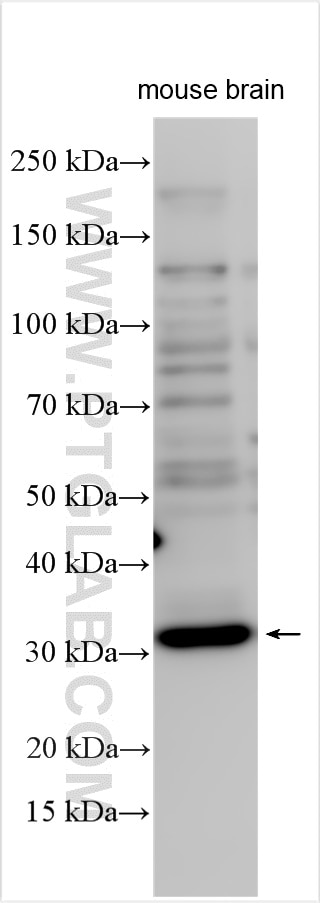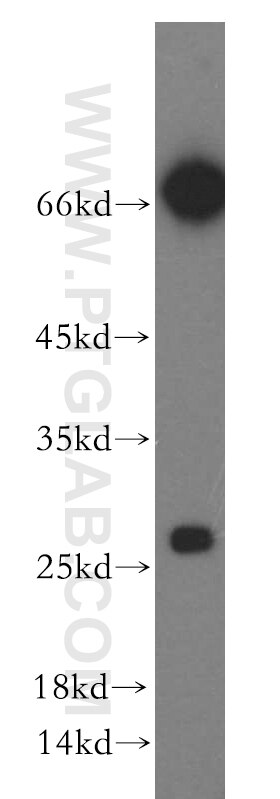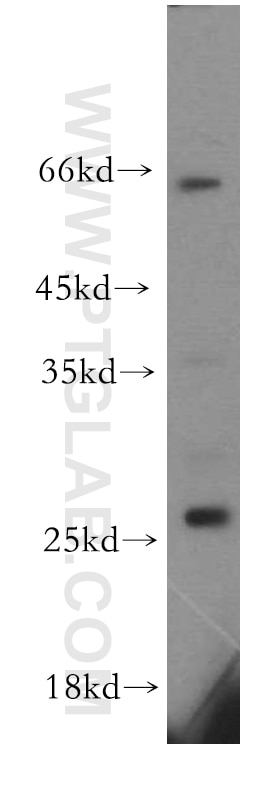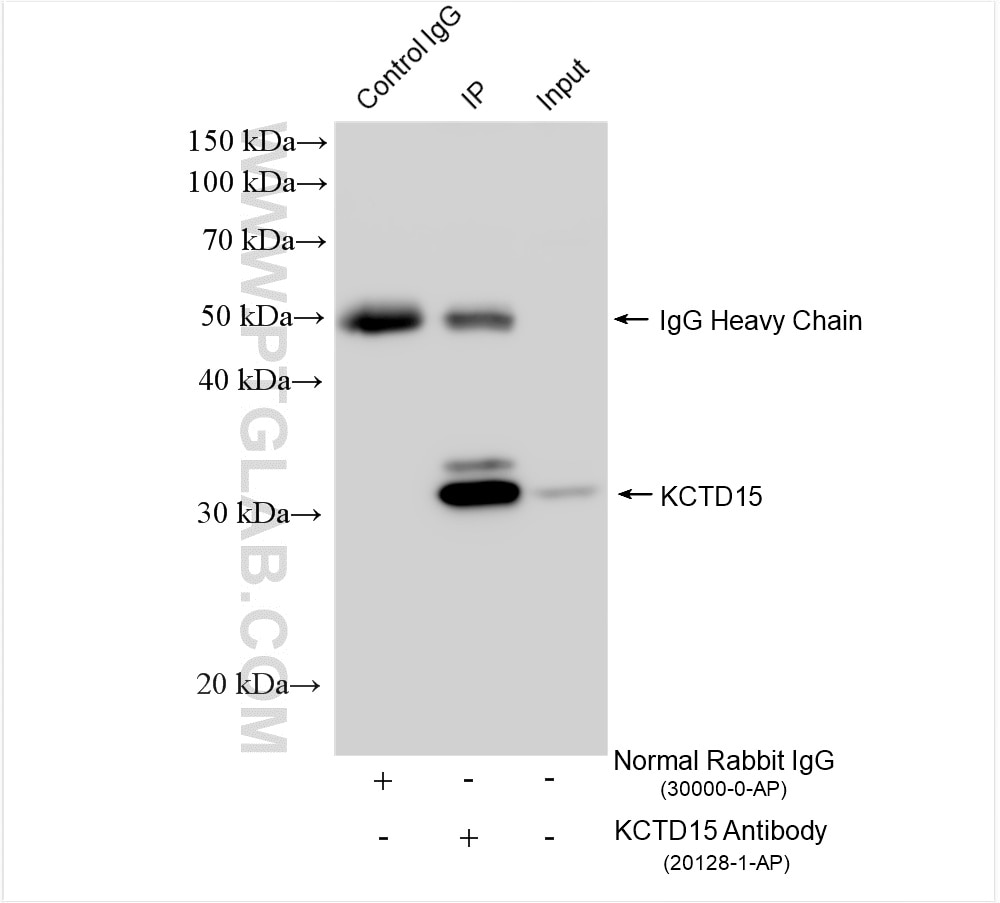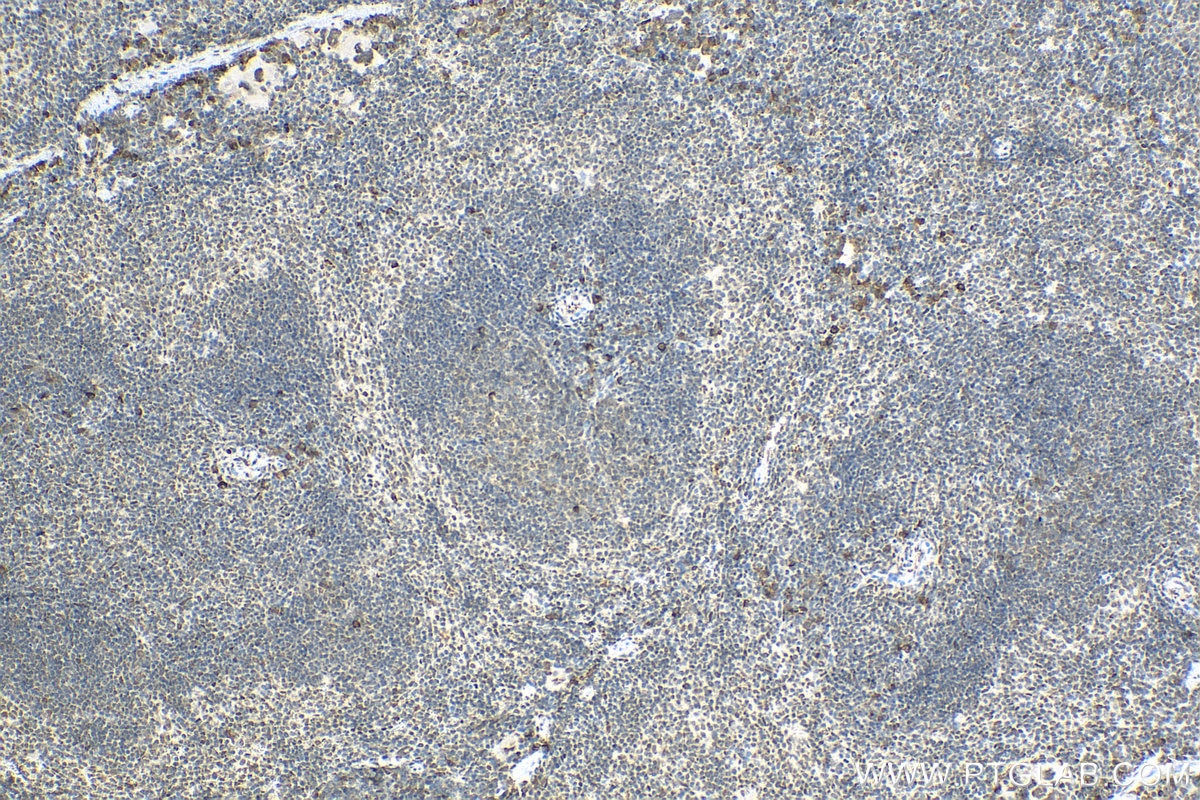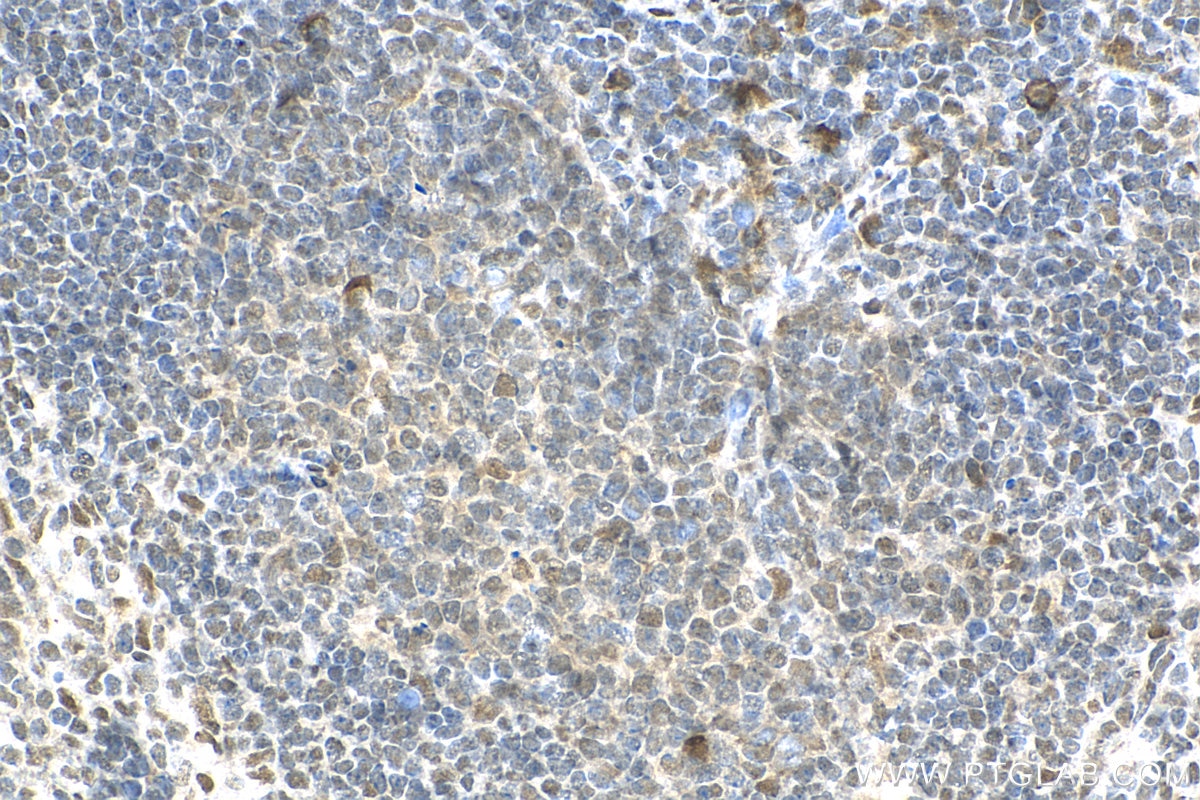- Featured Product
- KD/KO Validated
KCTD15 Polyklonaler Antikörper
KCTD15 Polyklonal Antikörper für WB, IHC, IP, ELISA
Wirt / Isotyp
Kaninchen / IgG
Getestete Reaktivität
human, Maus, Ratte
Anwendung
WB, IHC, IP, ELISA
Konjugation
Unkonjugiert
Kat-Nr. : 20128-1-AP
Synonyme
Geprüfte Anwendungen
| Erfolgreiche Detektion in WB | Maushirngewebe, C6-Zellen, HEK-293-Zellen, Mauslungengewebe |
| Erfolgreiche IP | C6-Zellen |
| Erfolgreiche Detektion in IHC | Mausmilzgewebe Hinweis: Antigendemaskierung mit TE-Puffer pH 9,0 empfohlen. (*) Wahlweise kann die Antigendemaskierung auch mit Citratpuffer pH 6,0 erfolgen. |
Empfohlene Verdünnung
| Anwendung | Verdünnung |
|---|---|
| Western Blot (WB) | WB : 1:500-1:1000 |
| Immunpräzipitation (IP) | IP : 0.5-4.0 ug for 1.0-3.0 mg of total protein lysate |
| Immunhistochemie (IHC) | IHC : 1:50-1:500 |
| It is recommended that this reagent should be titrated in each testing system to obtain optimal results. | |
| Sample-dependent, check data in validation data gallery | |
Veröffentlichte Anwendungen
| KD/KO | See 1 publications below |
| WB | See 1 publications below |
Produktinformation
20128-1-AP bindet in WB, IHC, IP, ELISA KCTD15 und zeigt Reaktivität mit human, Maus, Ratten
| Getestete Reaktivität | human, Maus, Ratte |
| In Publikationen genannte Reaktivität | human |
| Wirt / Isotyp | Kaninchen / IgG |
| Klonalität | Polyklonal |
| Typ | Antikörper |
| Immunogen | KCTD15 fusion protein Ag13962 |
| Vollständiger Name | potassium channel tetramerisation domain containing 15 |
| Berechnetes Molekulargewicht | 283 aa, 32 kDa |
| Beobachtetes Molekulargewicht | 26 kDa |
| GenBank-Zugangsnummer | BC001185 |
| Gene symbol | KCTD15 |
| Gene ID (NCBI) | 79047 |
| Konjugation | Unkonjugiert |
| Form | Liquid |
| Reinigungsmethode | Antigen-Affinitätsreinigung |
| Lagerungspuffer | PBS with 0.02% sodium azide and 50% glycerol |
| Lagerungsbedingungen | Bei -20°C lagern. Nach dem Versand ein Jahr lang stabil Aliquotieren ist bei -20oC Lagerung nicht notwendig. 20ul Größen enthalten 0,1% BSA. |
Hintergrundinformationen
KCTD15 is a member of the KCTD family of proteins, which are involved in various biological processes. KCTD15 plays a role in embryonic development by regulating the neural crest domain. It inhibits neural crest induction by repressing the Wnt/β-catenin signaling pathway. KCTD15 is involved in the NF-κB signaling pathway, which is crucial for immune responses and inflammation. Its deregulation can influence the activation of the IKK-β enzyme complex, triggering the NF-κB pathway. KCTD15's expression levels in peripheral blood cells and leukemia cells suggest its potential as a biomarker for diagnosing and monitoring acute leukemias. Its distinct expression profile in different types of white blood cells highlights its importance in both physiological and pathological processes.
Protokolle
| PRODUKTSPEZIFISCHE PROTOKOLLE | |
|---|---|
| WB protocol for KCTD15 antibody 20128-1-AP | Protokoll herunterladen |
| IHC protocol for KCTD15 antibody 20128-1-AP | Protokoll herunterladenl |
| IP protocol for KCTD15 antibody 20128-1-AP | Protokoll herunterladen |
| STANDARD-PROTOKOLLE | |
|---|---|
| Klicken Sie hier, um unsere Standardprotokolle anzuzeigen |
Publikationen
| Species | Application | Title |
|---|---|---|
Oncogenesis KCTD15 inhibits the Hedgehog pathway in Medulloblastoma cells by increasing protein levels of the oncosuppressor KCASH2.
| ||
Proc Natl Acad Sci U S A KCTD1 regulation of Adenylyl cyclase type 5 adjusts striatal cAMP signaling |
